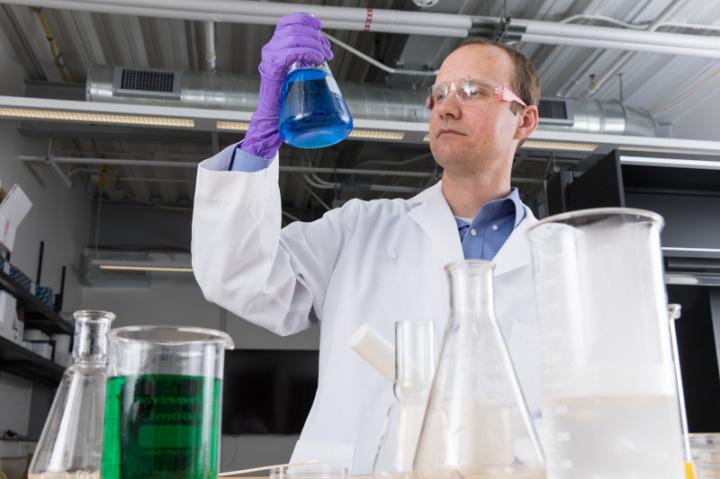With funding through the Southwest Health Equity Research Collaborative, Northern Arizona University researchers are partnering with the University of Hawai’i to investigate biological, socioeconomic factors driving early childhood caries

Credit: Courtesy Northern Arizona University
Nationally, rates of early childhood caries, or tooth decay, among Hispanic, American Indian, Native Hawaiian and Other Pacific Islander children are almost double those of white children, making it the most prevalent chronic disease among these populations–occurring five times as frequently as asthma.
Researchers at Northern Arizona University have been working on a major study of 350 minority preschoolers in northern Arizona for three years to demonstrate that biological components combine with socioeconomic factors, including poverty and access to dental care, to increase tooth decay.
Now, with funding through NAU’s Southwest Health Equity Research Collaborative (SHERC), the team has begun the first large-scale effort to understand the biological factors that drive tooth decay in preschool aged children in Yuma, Ariz., and on the island of Hawai’i (the Big Island). In Hawai’i , the specific population identified for the study are Native Hawaiian or Other Pacific Islander children–those having origins in any of the Indigenous peoples of Hawai’i, Guam, Samoa or other Pacific Islands.
NAU assistant professor Viacheslav “Slava” Fofanov of NAU’s School of Informatics, Computing, and Cyber Systems has been leading the study in northern Arizona. Along with Regents’ Professor Julie A. Baldwin–director of NAU’s Center for Health Equity Research and principal investigator of SHERC– Fofanov will collaborate on the new study with Misty Pacheco, associate professor of kinesiology and exercise sciences at the University of Hawai?i at Hilo. Pacheco was also recently awarded a two-year diversity supplement from SHERC to design a targeted intervention education program in Hawai’i for preschoolers and their families.
Fofanov and Baldwin said they decided to partner with Pacheco because the main study in Arizona does not include children who are Native Hawaiian or Pacific Islander. Similar social determinants of health exist on the Big Island as in many rural populations in the continental US.
“We are so excited to be able to work with Dr. Pacheco at the University of Hawai’i on this project and to support her career development through this newly funded Diversity Supplement,” Baldwin said. “SHERC is dedicated to building the research capacity of underrepresented scholars and this project will do just that, while tackling a major health disparity experienced among Native Hawaiian and Pacific Islander children.”
“Early childhood caries among preschool-aged children, specifically Native Hawaiian and other Pacific Islander preschoolers, are a major priority not only for the Big Island, but also the State of Hawai’i,” Pacheco said. “To be able to address this critical health disparity in my hometown is a privilege, as is the opportunity to work with Drs. Baldwin and Fofanov, who have been amazing mentors and partners.”
In both studies, the goals for researchers are to determine the impact of classroom-based microbiome and bacterial transmission on tooth decay rates. Fofanov and his colleagues have found that the strains S. mutans and S. sobrinus are the bacteria that most contribute to childhood tooth decay. The bacteria metabolize carbohydrates and produce highly acidic byproducts that change the pH in a person’s mouth, which leads to demineralization of tooth enamel. Fofanov said that preschools, as well as family households, are ideal environments for the bacteria to spread.
“Part of the choice to examine children in preschool is that they are a lot more isolated (as a group) than elementary school students,” Fofanov said. “We know that the problems that start in the preschool are continuing beyond there.”
He said that through their research, the team hopes to discover the best interventions to eliminate the bacteria and improve dental health, especially among minority groups. They also hope to reduce dental costs nationally. In 2012 alone, early childhood tooth decay cost $1.6 billion in emergency dental care in the US.
###
About Northern Arizona University
Northern Arizona University is a higher-research institution providing exceptional educational opportunities in Arizona and beyond. NAU delivers a student-centered experience to its 31,000 students in Flagstaff, statewide and online through rigorous academic programs in a supportive, inclusive and diverse environment. Dedicated, world-renowned faculty help ensure students achieve academic excellence, experience personal growth, have meaningful research opportunities and are positioned for personal and professional success.
Media Contact
Diane Rechel
[email protected]
Original Source
https:/




